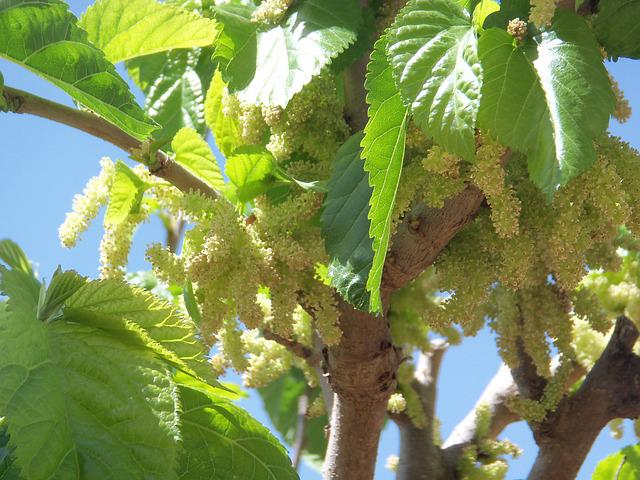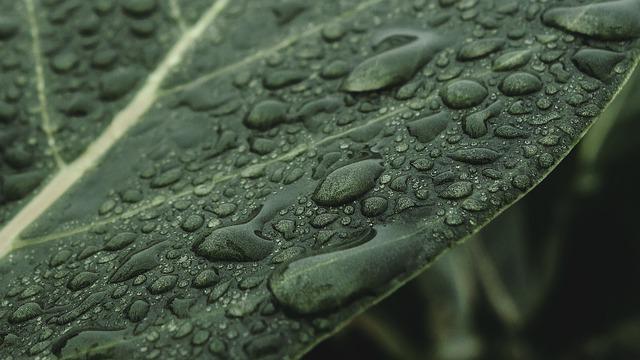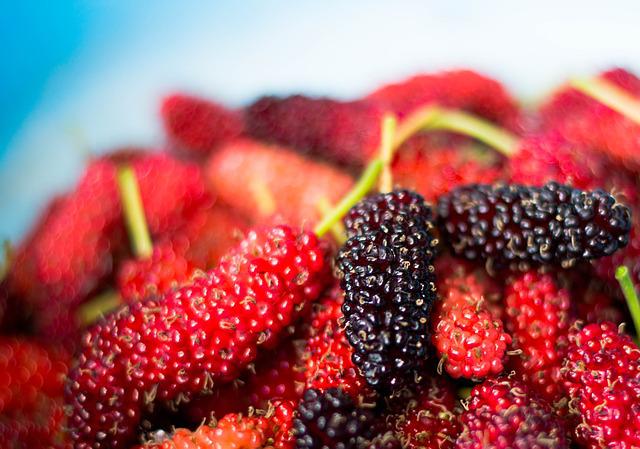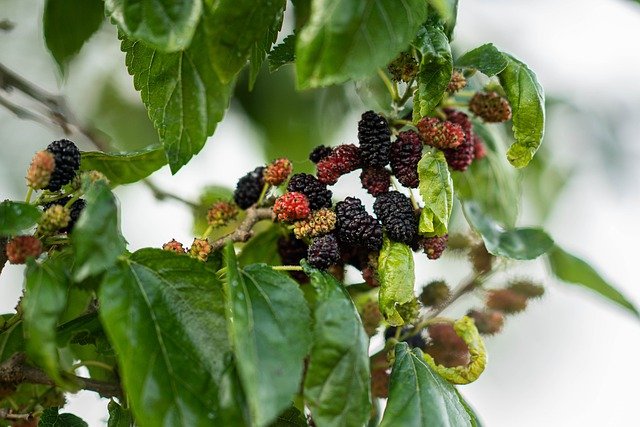Can You Plant Mulberry Trees in Pots? –A Quick Guide to Growing Mulberry in Pots

Do you want to add a luxurious and long-lasting tree to your garden, but don’t have the space for a full-grown specimen? Fear not! You can plant mulberry trees in pots – and they’re perfect for small gardens or urban allotments. Here’s everything you need to know about mulberry trees in pots, from how to choose the right variety to planting tips for success. To know more keep on reading!
Table of Contents
Requirements for Growing Mulberry in Pots
Choose a Right Pot
It is not appropriate for people to plant fruit trees or shrubs directly in large pots, as this causes the plant to begin developing its roots rather than concentrating on the growth that occurs above ground. BEGIN with more manageable containers. For instance, select a standard 5-gallon pot with dimensions of 12 inches wide and deep or a slightly larger 7-gallon pot with dimensions of 14 inches wide and deep, and then upgrade to a pot that is one size larger each time you observe the plant showing signs of becoming root-bound. Later on, increase the size of the pot to 15-20-25 gallons, depending on the cultivar that you’re growing and the space you have available.
Select a Suitable Variety for Containers
Mulberry ‘Dwarf Everbearing’ (Morus nigra) and the Mulberry ‘Issai’ are particularly well-suited for growing in containers (Morus alba). Both types bear fruit in relatively small containers as the plants are still young, and they also have a flowering and fruiting cycle that continues throughout the entire growing season.
Mulberry ‘Dwarf Everbearing’
Morus nigra
Our ‘Dwarf Everbearing’ can be grown in pots as small as 8-10 inches in diameter (or even smaller), and with some light annual pruning, a plant kept in this size container can continue to expand its canopy for many years. The plant produces a very small fruit (about half an inch in length), but when it is fully ripe, the fruit is exceptionally sweet, and there is an abundance of it. This mulberry plant can be described as “Dwarf Everbearing” when grown in a container because it stays relatively small. If it is planted directly in the soil ground, it will grow to be a much larger size. On the other hand, if it is kept in a pot, it will remain well contained and fruit abundantly throughout the season.
Mulberry ‘Issai’
Morus alba
This particular variety of mulberry is a Japanese cultivar that blooms and bears fruit at regular intervals throughout the growing season. It has a heavier growth and a more open growth habit than the ‘Dwarf Everbearing,’ and its fruit is significantly bigger than those of the dwarf variety. It begins bearing fruit at a young age and, with some attention from the pruning shears here and there, can be kept alive in a container for many years to come.
Exposure to the Light
To achieve the best possible results, mulberry plants require exposure to the full sun when growing from spring through fall, which is the active growing season. The best conditions for growing mulberries are the full sun in the southerly aspect of the garden. Mulberry trees are hardy enough to spend the summer months outside your garden if you live in a northern planting zone. The plant can grow in conditions with less light, such as exposure to the east or west, but the fruiting will be negatively affected.
Watering
You can determine whether the top inch of soil is dry by scratching or poking the soil’s surface. At this point, the soil needs to be watered. In the early stages of the plant’s development, when it has not yet become well established, you should maintain a consistent moisture level in the soil. Once the tree has become well established, you should water it only sparingly. The soil will dry out very quickly during the summer, so you will need to water it more frequently.

Soil
Choose a pH-balanced potting soil that is rich, loamy, and well-drained. Soil rich in compost or manure is ideal for the mulberry tree’s needs. So don’t forget to include this as well. Drainage is critical to the success of a container-grown mulberry tree. It is not acceptable to use soil that prevents water from draining. As a result, a soilless potting mix is recommended.
Climate
There are mulberry trees on every continent. It can be grown in temperate, subtropical, and tropical, dry zones. It can be grown in USDA zones 5–10, and it can also be grown in Zone 11 with some trouble. A mulberry tree can also be grown in USDA zones 3 and 4 with care in the winter. *If you live in a cold area, your mulberry tree will lose its leaves in the winter. New growth starts when the weather gets a little warmer in the spring.
Care and Maintenance
Providing your Mulberry Plant with Fertilizer and Food
Fertilizer is necessary for the healthy growth of mulberry plants, and the plants can receive any type of balanced fertilizer during the growing season. When watering once a week, liquid soluble fertilizer can be used at a diluted strength to help the plant grow. Alternately, you could top-dress with an organic granular fertilizer by scattering it over the top of the soil once every month. Mulberry plants are moderate feeders, and although they will grow like gangbusters if fed heavily, it is best to go easy on the fertilizer since the fruit production is better if the plant is not constantly forcing new leaf growth at the expense of fruiting. Mulberry plants can grow like gangbusters if fed heavily, but it is best to go easy on the fertilizer because they are moderate feeders.
Pruning
Take away the plant’s dead and decaying parts so that the plant’s energy can go toward healthy growth. The best time to prune is when the plant is dormant in winter or right after summer in tropical areas. Wait until the mulberry is done bearing fruit before you prune it.
Mulching
Since you’re growing a mulberry tree in a container, you need not worry about winter’s freezing temperatures. Below USDA Zone 7, it is essential to insulate the roots by mulch to the soil’s surface. If you are storing your pots in an exposed location, you should protect them with bubble wrap.
Mulching also resists summer heat, so a mulberry tree in a warm climate would benefit from a mulched top layer.

Covering with Fruit
The mulberry fruit is a favorite of birds, who prefer it to any other. Plants in open areas, such as a patio or rooftop, may need their fruits covered if birds frequent the area.
Pests and Diseases
Mildew, leaf spot, and root rot can all be signs of diseases. Root rot can be avoided by ensuring enough drainage and not watering too much. Pests affecting growth include thrips, whiteflies, mealy bugs, spider mites, and scales. But if you grow mulberry in a pot, you can easily outnumber and get rid of these pests.
How to Propagate
Cuttings, grafting, or seeds can all propagate mulberry trees, but cuttings are the most efficient method. Mulberry cutting propagation yields an early crop as well. If you’re purchasing the mulberry plant from a nursery, specify that you want the dwarf variety. As a seedling will take years to mature into a fruitful plant, it is not recommended to grow it. The seed has the potential to develop into a male tree, rendering it sterile for all time.
Cutting
- Cuttings can be made from a healthy, mature branch or stem by snipping off the top. Leave at least 15 inches of the stem after you cut off the bottom tip of the stem. Remove all of the larger mature leaves. The bottom of the cutting can optionally be dipped in a rooting hormone/solution to help it take root. After that, plant the cutting in a pot of soil and water it thoroughly. Keep the pot out of direct sunlight or rain, if possible. The soil in the pots should always be moist.
- A sign that the cutting has taken root is when new leaves sprout. Expose the pot to direct sunlight gradually (no more than 2 hours in the morning for the first week). The cutting can be moved to a larger pot after two months.
Seed Propagation
- Squish the berries to extract the seeds after soaking them for 24 hours in water.
- Wait for the seeds to dry completely after placing them on the paper towel.
- Place the dry seeds in a Ziploc bag with moist filter paper.
- For stratification, place the Ziploc in the refrigerator for at least 90 days.
- A well-draining potting mix should be used, and the seeds should be sown just below the surface.
- After the seeds have germinated for two to six weeks, separate the seedlings into individual pots.
Do Mulberries Grow Well in Pots?
Mulberries can be grown in pots as long as the soil is well-drained and the roots are given plenty of fertilizer. Mulberries will grow well in pots as long as they are given a nutritious diet. The plant would take longer to bear fruit, though if the nutrient level gets too low or there is not enough water in the soil, it can cause stunted growth and eventual loss of vitality.
How Long Does Mulberry Bear Fruit?
Mulberry trees can bear fruit within 3 to 5 years. The mulberry tree is slow-growing, so the wait time may be longer for some trees. The source of information is the University of Massachusetts Amherst website.

